 is replaced with ℏωp, is given below:
is replaced with ℏωp, is given below:Additions and corrections
Assistance of metal nanoparticles in photocatalysis – nothing more than a classical heat source
Y. Sivan*, I. W. Un and Y. Dubi
Faraday Discuss., 2019, 214, 215–233. Amendment published 09 April 2020.
The authors regret that the definition of R on page 220 is incorrect in the original article. The correct definition, in which  is replaced with ℏωp, is given below:
is replaced with ℏωp, is given below:
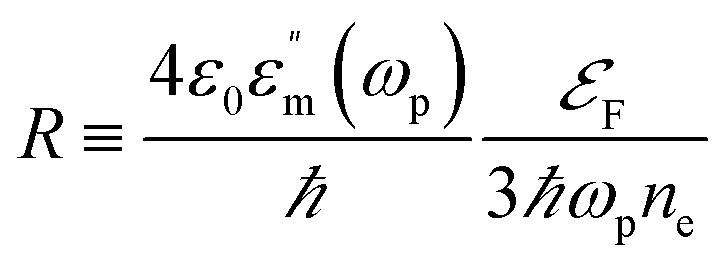
 has also been replaced by ℏωp in a number of places in Appendix A and any corresponding calculated values have been updated. The equations affected are equation A7, the equations for R and
has also been replaced by ℏωp in a number of places in Appendix A and any corresponding calculated values have been updated. The equations affected are equation A7, the equations for R and  , and the value of Δf. The second row of Table 1 has also been updated to define ωp. The full corrected appendix is shown below.
, and the value of Δf. The second row of Table 1 has also been updated to define ωp. The full corrected appendix is shown below.
Additionally, the equation in the second last paragraph of page 226 in the original article is incorrect. The corrected version is shown below and in the corrected Appendix A reproduced below.

In addition, the characters  ,
,  , and E, were use incorrectly in Appendix A in the original article and are updated here for clarity.
, and E, were use incorrectly in Appendix A in the original article and are updated here for clarity.
Appendix A. An estimate of the quantum mechanical excitation term for CW illumination of a metal nanoparticle
We employ the elegant expression proposed in ref. 57; namely, we define  such that
such that  is the (joint) probability of photon absorption of frequency between ω and ω+dω for the final energy
is the (joint) probability of photon absorption of frequency between ω and ω+dω for the final energy  measured with respect to the bottom of the band at
measured with respect to the bottom of the band at 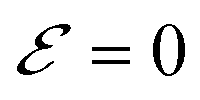 . We define this probability as
. We define this probability as

(A1)
where  is the squared magnitude of a transition matrix element for the electronic process
is the squared magnitude of a transition matrix element for the electronic process  . Furthermore, ρJ corresponds to the population-weighted density of pair states,
. Furthermore, ρJ corresponds to the population-weighted density of pair states,

(A2)
and 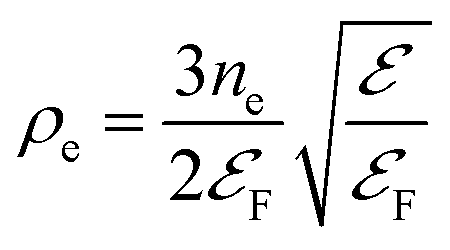 is the density of states of a free electron gas;50 ne is the electron density. Finally, nA(ω) is the number density of absorbed ℏω photons per unit time between ω and ω+dω, and
is the density of states of a free electron gas;50 ne is the electron density. Finally, nA(ω) is the number density of absorbed ℏω photons per unit time between ω and ω+dω, and  is the total number density of absorbed photons per unit time. For CW illumination, this is given by
is the total number density of absorbed photons per unit time. For CW illumination, this is given by
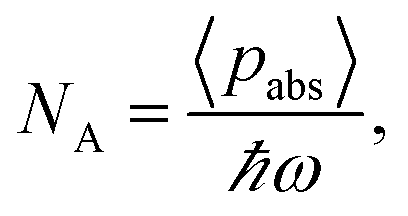
(A3)
where the averaged absorbed optical power density (in units of W m−3) is given by the Poynting vector,86 namely

(A4)
where 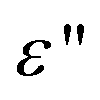 is the imaginary part of the metal permittivity, and the spatio-temporal averaging,
is the imaginary part of the metal permittivity, and the spatio-temporal averaging,  , is performed over a single optical cycle such that only the time-independent component remains and is over the NP volume.
, is performed over a single optical cycle such that only the time-independent component remains and is over the NP volume.
The net change of electronic population at energy  per unit time and energy at time t due to absorption is
per unit time and energy at time t due to absorption is  , where
, where

(A5)
describes the total (probability of a) population change at energy  per unit time and energy at time t. Altogether,
per unit time and energy at time t. Altogether,
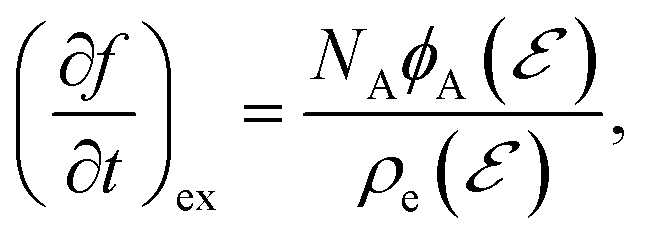
(A6)
meaning that electron number conservation is ensured,  .
.
For CW illumination,  and
and  . For the low intensities considered here, one can ignore the temperature dependence of the metal permittivity.38,87
. For the low intensities considered here, one can ignore the temperature dependence of the metal permittivity.38,87
For simplicity, we now approximate ρe by its value at  . In the same spirit, we define the normalized transition matrix element
. In the same spirit, we define the normalized transition matrix element  and ignore its energy-dependence. Thus, we also find that
and ignore its energy-dependence. Thus, we also find that  , meaning that
, meaning that  . In this case, the excitation rate (A6) can be approximated by
. In this case, the excitation rate (A6) can be approximated by

(A7)
where  is a dimensionless O(1) function representing the 2ℏωp step-like energy dependence of the quantum excitation term and
is a dimensionless O(1) function representing the 2ℏωp step-like energy dependence of the quantum excitation term and  (see the parameter definitions and values in Table 1). Thus, we can estimate the non-thermal carrier density as
(see the parameter definitions and values in Table 1). Thus, we can estimate the non-thermal carrier density as

(A8)
Table 1 Parameters used in the simulations and the values chosen for (low quality)73 Ag

The Royal Society of Chemistry apologises for these errors and any consequent inconvenience to authors and readers.
Back to article